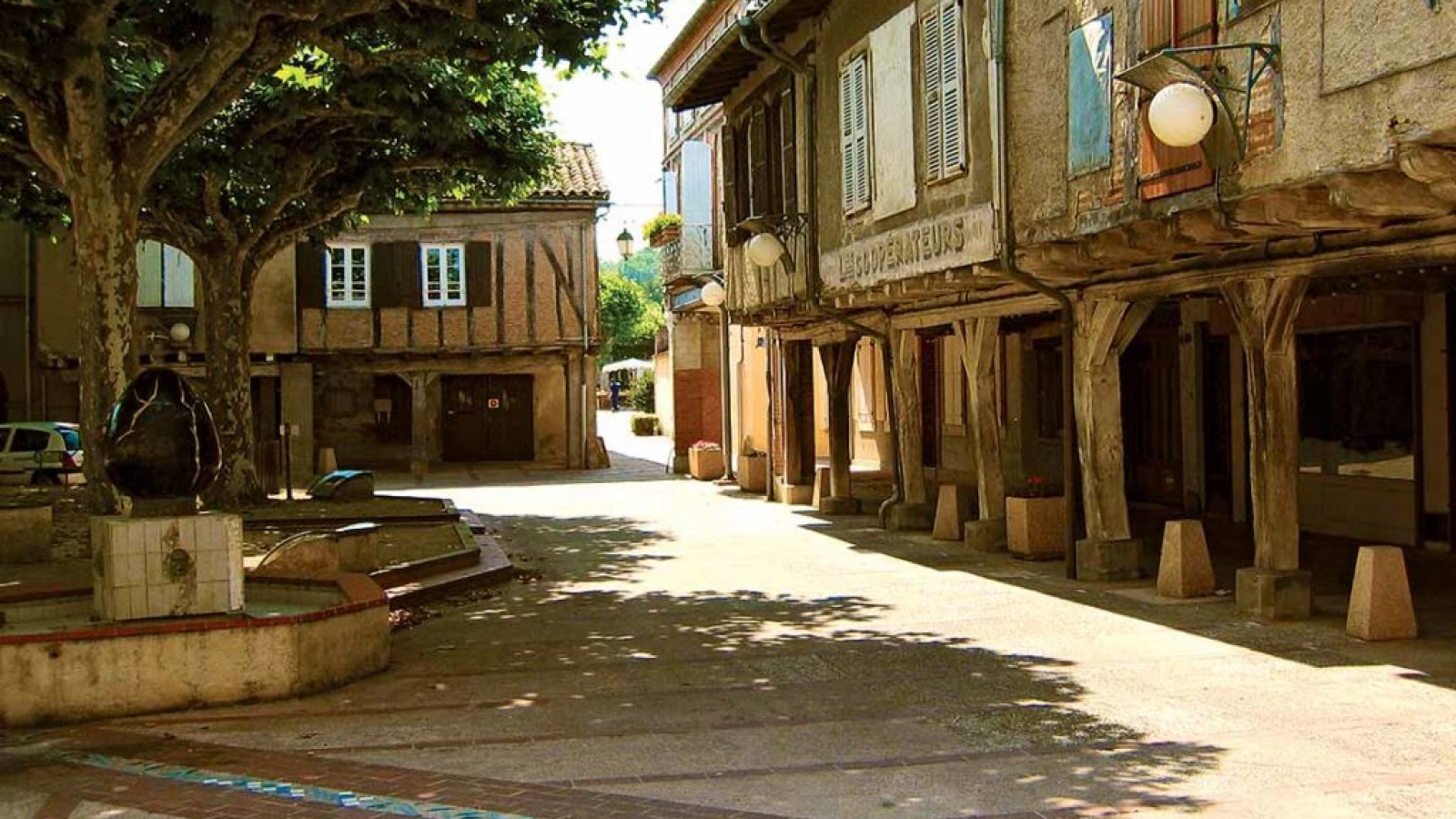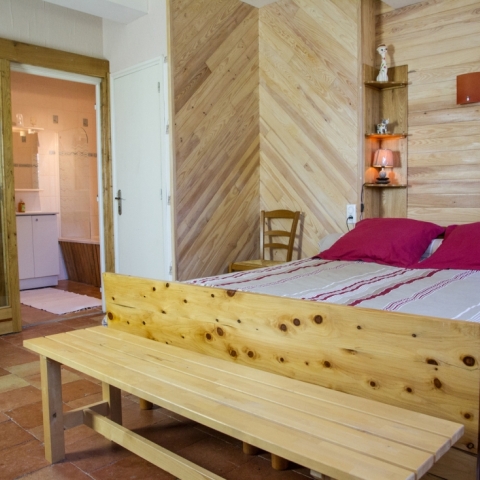
Briatexte
With its 12th century square lined with arcades and surrounded by half-timbered houses, Briatexte is a lovely little bastide village that’s well worth a visit.
Briatexte, a relaxed bastide village
Founded in 1287, Briatexte was fortified in the 14th century during the Religious Wars. Today, however, it’s a charming village where it feels good to amble around before heading out on pathways that are perfect for rambling.
The bastide village of Briatexte was founded by Simon de Briseteste, the steward of Carcassonne for the royal court of King Philip IV. The village was built to replace the Cathar village of Touelles, which was burned to the ground by Simon de Montfort’s soldiers in 1212. The village was designed to oppose the neighbouring town of Saint-Gauzens and was built in typical bastide style, with a grid layout and a pretty square surrounded by covered walkways.
Fortified in the 14th century, Briatexte played an important role in the French Religious Wars. The village’s inhabitants, who’d converted to Protestantism, made Briatexte a stronghold that would never be successfully attacked. Occupying the southern part of the square, Briatexte’s church was knocked down around 1574 and a Protestant temple was built in its place. One exceptional building in the rue du Château dates from this troubled time, the home of the Lord of Montalivet, the Protestant consul of the town at the beginning of the 17th century. The window frames and the large semi-circular archways on the ground floor, all in matching stonework, provide a vibrant contrast to the brickwork of the house.
During the first Huguenot rebellion in 1622 the Catholic troops of César, Duke of Vendôme, comprising 7000 infantrymen and 500 cavalry, laid siege to Briatexte after first taking and then burning Lombez. The main square was defended by Captain Faucon, who’d been put in charge of 500 soldiers by Henri de Bourbon, marquis of Malauze, the head of all Protestants in the region.
Thanks to reinforcements – not to mention gunpowder provided by the marquis of Malauze – Captain Faucon held firm for a month and repelled five separate attacks. Called back by the king who was himself laying siege to Montpellier, the Duke of Vendôme finally withdrew from Briatexte after firing 2000 canon balls and losing 1500 men.
Having reconverted to the state religion following the Revocation of the Edict of Nantes, Briatexte’s fortifications were levelled in 1629 and the temple was destroyed in 1685.

Today’s church in Briatexte sits beyond the ancient fortifications and the River Dadou is now the village’s last defence. From the bridge you can enjoy a picturesque view of the mill and pigeon loft. Don’t miss the fortified mill, whose lower sections were built by the monks of the Candeil Abbey around the 14th century. The mill belonged to the Lord of Briatexte, Baron d’Aiguevive, before the French Revolution. Today it serves as a magnificent backdrop for romantic walks along the River Dadou.
The Briatexte pigeon loft dates back to the 17th century and was beautifully restored in 2011. It’s a fine example of how important pigeon breeding could be in the region. Why not look at the farm’s campsite for an unusual place to stay? Or one of the commune’s gites, where you’re always guaranteed a warm welcome.











